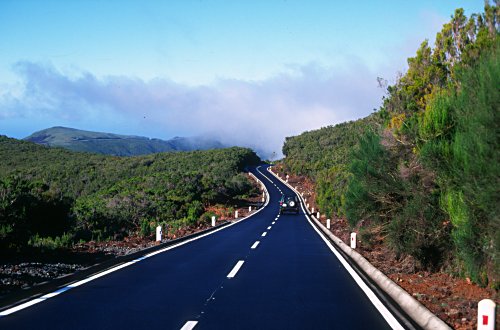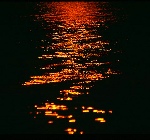Taking photos from cars, trains, boats and planes:
There are a few things to bear in mind if you think of shooting out of the window of a moving means of transport:
Motion Blur:
If you take a picture out of the side window of a fast moving car or high speed train, the result will be as blurred as if you were standing still while a car or train was passing you by. What matters is the speed of the two objects relative to each other.
When you shoot out of the train or car, the closest objects will be blurred most, the ones in the distance will be blurred the least.
How do you cope with this? Simply increase your shutter speed, as you would do to freeze the movement of a fast moving subject. A photo taken at 1/1000 s will be much less blurred than one taken at 1/60 s.
Usually, it’s best to set your camera to time or aperture automatic so you do not have to fiddle with the settings for each photo.
This will lock in either a certain fixed exposure time, or a wide open aperture, providing the fastest exposure times possible with this lens opening.
The drawback is that this reduces depth of field, but when shooting from a car or train, you usually are dealing with infinite distances anyway.
It’s a good idea to set your camera to manual focus at an infinite distance.
Don’t forget resetting your camera to its normal function when you finish moving though!
Another aspect of motion blur is that it will be much more pronounced when shooting from side window than out of the front or back window.
During the time it takes to take the picture at a slow speed, the close object is not even in the frame anymore. The resulting photo will be blurred. The distant object also move quite a bit within the frame of the picture, but less so than the close one. Result: Less motion blur at the same shutter speed.

Shooting out of the front window, the distant object will become a bit “bigger” on the photo during the time needed to take the photo, leading to a negligible zoom effect. The picture should not be blurred.
Photo taken out of a moving car.
Ships and boats are a special problem as they do not only move in one direction.
I found it useful to set up my camera on a tripod with a cable release, wait for a quiet moment and press the shutter quickly then. This is usually only required with tele lenses.
Obstruction by Objects
When shooting out of a side window of a moving car, bushes, trees, lamp posts, electricity lines etc. may suddenly appear in the picture. Not good for composition and usually these close objects are blurred.
Before shooting look out for such objects and try to shoot when you are clear of them.
If this is not possible and there is a particularly breathtaking scenery, you could set your camera to taking several pictures in a row. Chances are that one will be usable. Again setting shutter speed/aperture and manual focus in advance are highly advisable.
In an air plane, you are usually clear of such objects. Here the aircraft’s own wings are the problem.
Try getting a seat far away from the wings when you check in, or look for a free window when travelling. Usually, electronic appliances such as cameras are not to be operated during takeoff and landing, so you’ll be usually free to move when you want to shoot.
Reflections / Filter Effect
Very often, a window pane will bring reflections into your picture. Windows on airplanes often “colour” your pictures blue, green or violet. Sometimes it is possible to overcome this by using a polarising filter.
Now, what happens if you don’t move but your subject does? Read something about capturing movement.

